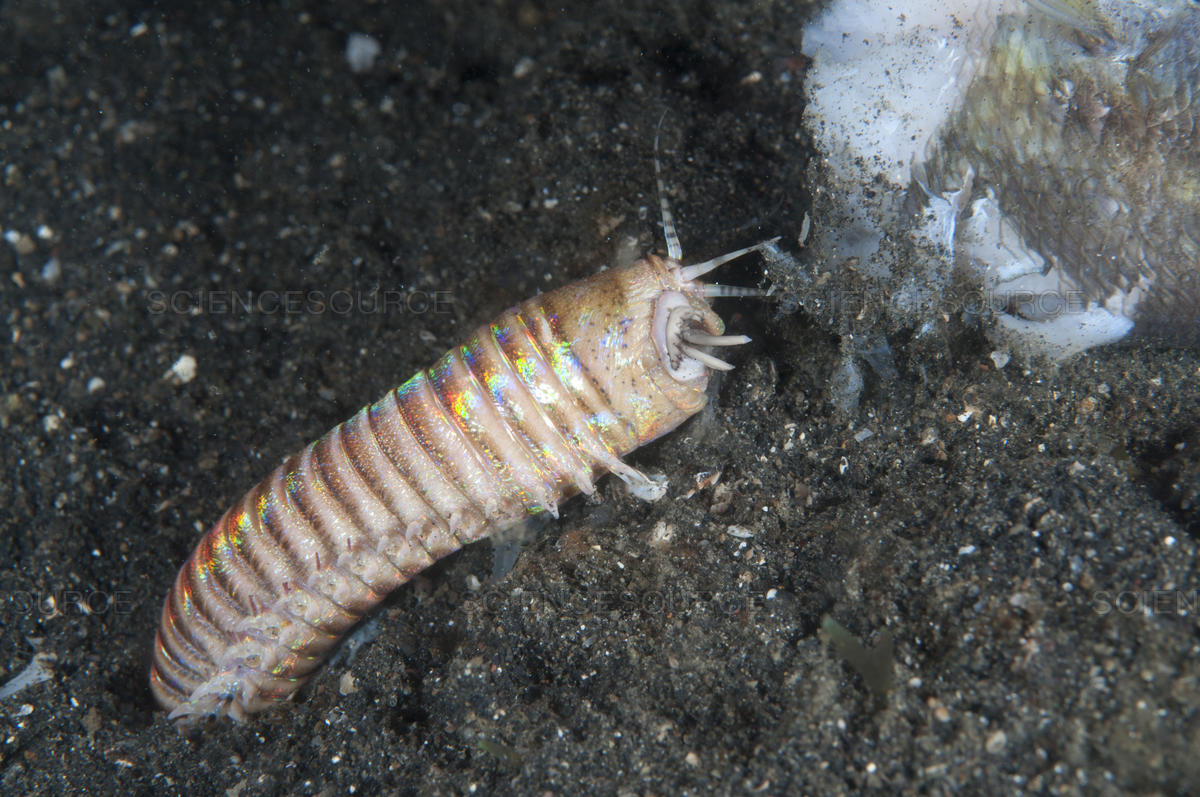The bobbit worm is a very weird and interesting marine species, so you should take advantage of this opportunitty to learn all about what we have for you about it.
The Bobbit worm, Bobbitt or Giant reef worm (Eunice Aphroditois) is a kind of annelid polychaete of the Eunicidae family. It lives on the ocean floor, where it buries its body in a bed of sand, gravel, mud or corals. Patiently waits for a stimulus in one of its five antennas and attacks when it detects a prey. The Bobbit worm is armed with sharp teeth, and is able to attack at high speeds such that it cuts its prey in two.
Table Of Content
Taxonomy
The species was observed by first time, in the tropical waters of the Indo-Pacific around Sri Lanka. However, this species has been reported worldwide, although experts believe that some people confuse them with other similar species of giant eunicidae worms.
For example, recent works formally classified the giant eunicidal worm that inhabits the Mediterranean and the Agean Seas as Eunice rousseau instead of Eunice Aphroditois. The hardships that arise to separate the different species morphologically, have made the taxonomy, systematics and understanding of the distribution and ecology of the species within the genus Eunice very complex.
The coding of molecular rods and molecular phylogenetic characters, along with additional studies of the material type and more data about the bobbit worm´s location, can be an useful tool in the task of defining this and other giant eunicide species with more precision , which is considered very necessary. .
Bobbit Worm´s Main Characteristics.
The Bobbit worm´s name, is related to the skill with which it uses its jaws to cut its prey and the similarity it has to a phallus when it is kept erect to catch them. At no time the Eunice aphroditois castrates her partner.
 About 20 years ago, an underwater photographer considered that this and other species of the genus Eunice recalled the 1993 Bobbitt family´s incident in which Lorena Bobbitt cut almost half of her husband’s penis. The Bobbit worm is a spectacular specimen, whose size varies between 3 to 6 meters in length, and its body is 25 mm wide. These worms are omnivorous, opportunistic and free-living, and live in burrows under sediments of sand, rocks or coral debris. They have five tentacles around their mouth, which is a very distinctive feature of this species.
About 20 years ago, an underwater photographer considered that this and other species of the genus Eunice recalled the 1993 Bobbitt family´s incident in which Lorena Bobbitt cut almost half of her husband’s penis. The Bobbit worm is a spectacular specimen, whose size varies between 3 to 6 meters in length, and its body is 25 mm wide. These worms are omnivorous, opportunistic and free-living, and live in burrows under sediments of sand, rocks or coral debris. They have five tentacles around their mouth, which is a very distinctive feature of this species.
When it detects its prey, the worm leaves its lair, exposing its pair of ferocious jaws, with which it pull its prey into the burrow.
It lives on the seabed at depths of 10 to 40 m, and has five antennae to detect its prey, like other worms and smaller fish, which it traps with a complex feeding device called the pharynx.
How Bobbitt Worm Reproduces?
Little is known about the reproductive habits and life cycle of this worm, but researchers believe that it reproduces from an early age, when it measures around 100 mm. These worms are larger in Malaysia and Singapore and smaller on Lembeh Island and the Moluccan Islands. Their prolonged longevity is probably the main reason of their big size.
Let’s watch it
Predators
Although the bobbit worm is considered an apiz predator, it can be preyed upon by groupers, sharks, rays, sea snakes and some sea birds such as pelicans, so the worm hides in the sand to go unnoticed.
The Bobbit Worm in Aquariums
Bobbit worms have been accidentally introduced into artificial environments. In March 2009, the Blue Reef Aquarium in Newquay, Cornwall discovered a Bobbit worm in one of its tanks. The workers observed some damage in the aquarium, but didn´t know what caused them.
They observed injuries or disappearances of the fish, as well as corals cut in half, but they couldn´t find the reason until they began to dismantle the aquarium’s screen and realized that the damage was caused by a bobbit worm, who was nicknamed «Barry». Another Bobbit worm, 1.1 m long and several centimeters thick, was found in October 7, 2013 at Maidenhead Aquatics in Woking, Surrey.
here they are again


